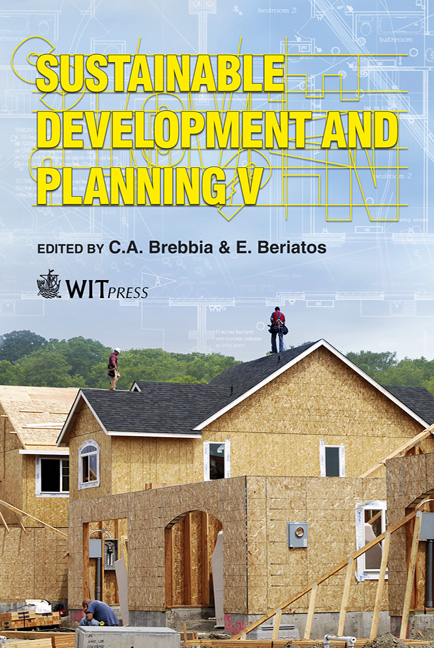Lowering The Sink Temperature For A Desert Solar Air Conditioning System
Price
Free (open access)
Transaction
Volume
150
Pages
12
Page Range
227 - 238
Published
2011
Size
3,370 kb
Paper DOI
10.2495/SDP110201
Copyright
WIT Press
Author(s)
M. A. Serag-Eldin
Abstract
The paper addresses the problem of cooling air conditioning systems in desert environments where ambient air temperatures are high, and cooling towers should be avoided because of scarcity of water resources. A proposed ground heat-sink is proposed which exploits the highly effective night-time desert cooling by long-wave atmospheric radiation. A simple computer model is presented for the performance of the heat-sink design, which integrates with a load calculation model for a hypothetical zero energy house, in which the air conditioning equipment is solar driven. The load-calculation and thermal-sink models are matched dynamically with the time dependent solar energy characteristics of the selected site, and predicted results are displayed and discussed. Keywords: solar air-conditioning, ZEH, renewable energy, geothermal cooling, heat sinks, COP. 1 Introduction Modern designs for desert Zero energy houses (ZEH) provide all modern comforts, relying on solar energy as the energy source to power the homes energy needs. By far the largest energy load for this environment is the air conditioning load, e.g. Serag-Eldin [1]. Air-conditioning equipment performance is affected heavily by the heat-sink (condenser) temperature, the higher the latter the lower the COP; indeed above a certain temperature the equipment mal-functions and may shut-down altogether to protect itself. Cooling the condenser requires dissipating the heat to a lower temperature environment. The two common methods of cooling are air cooling by atmospheric air (releasing heat to the environment directly) and water cooling by circulating
Keywords
solar air-conditioning, ZEH, renewable energy, geothermal cooling, heat sinks, COP.





